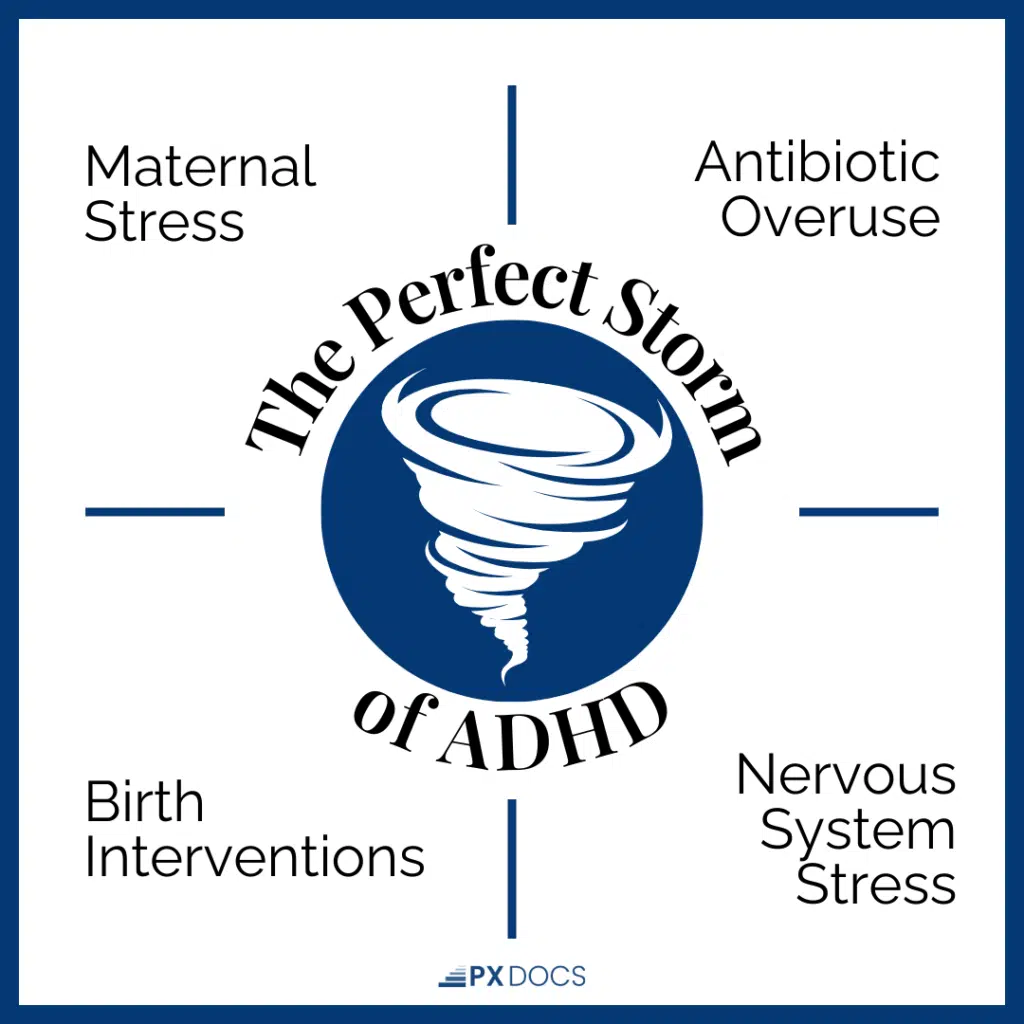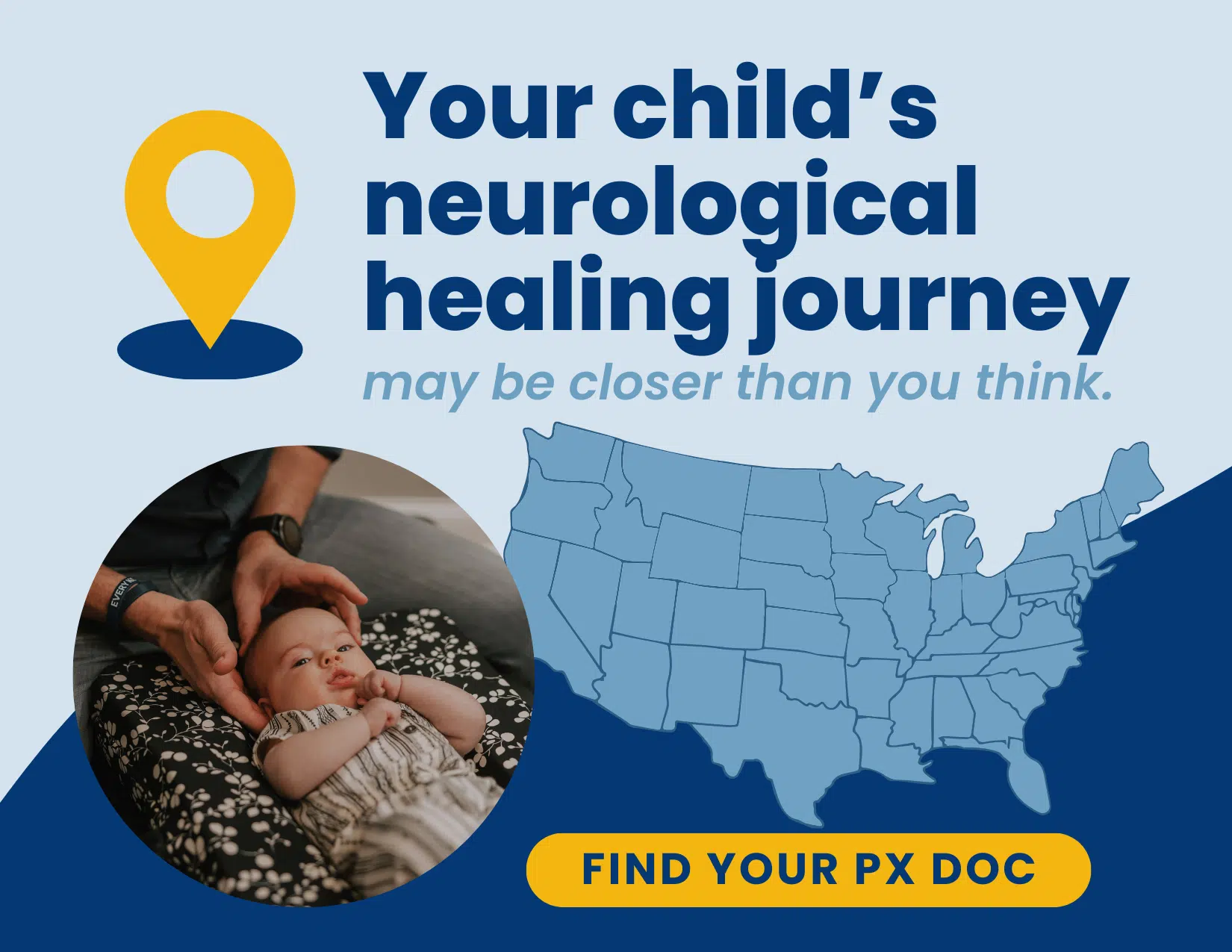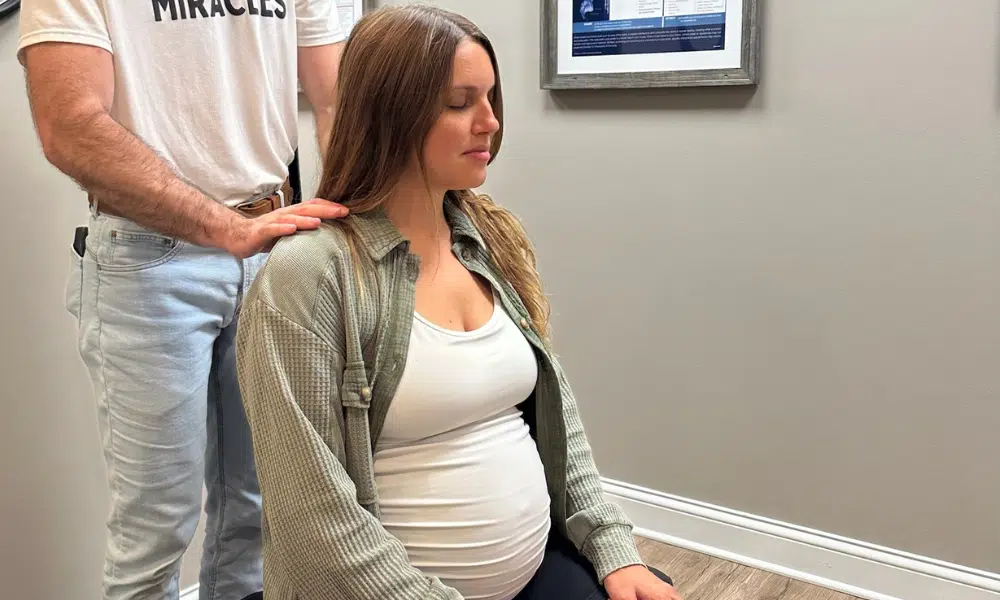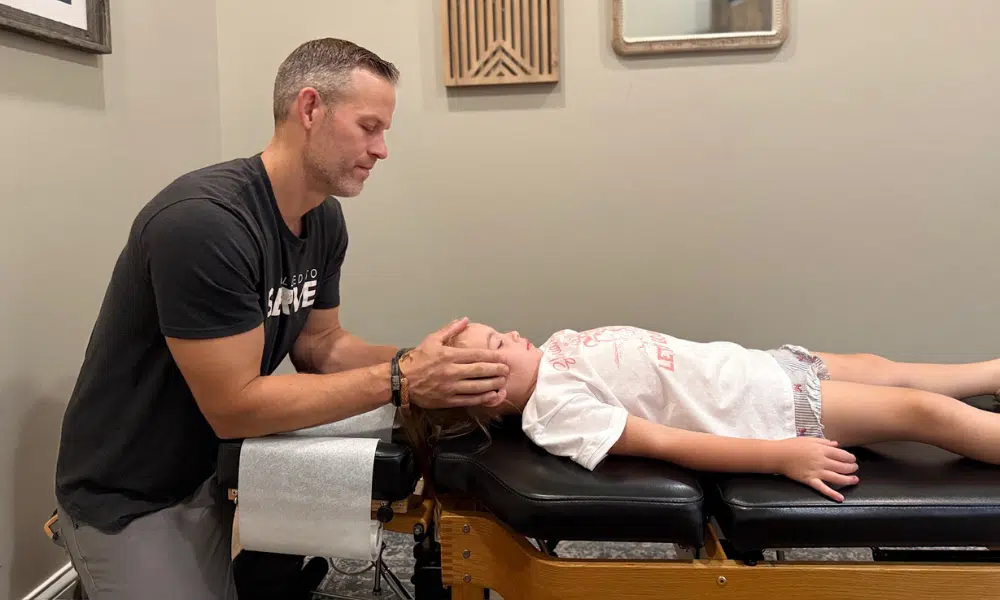Does your child have trouble paying attention, sitting still, or controlling their impulses? If so, you’re not alone. According to the Centers for Disease Control and Prevention (CDC), approximately 7 million children in the United States have been diagnosed with Attention Deficit Hyperactivity Disorder (ADHD) —that’s nearly 12% of all kids between the ages of 2 and 17.
ADHD can make daily life feel like an uphill battle, impacting everything from academic performance and social relationships to self-esteem and family dynamics. But what if there was more to the story than just a “deficit” or “disorder”? What if, by understanding the root causes of ADHD and providing the right care and support, we could help these incredible kids unlock their full potential?
In this article, we’ll explore the latest research on ADHD’s neurological basis and introduce a groundbreaking approach to managing ADHD characteristics and maximizing strengths. Whether you’re a parent searching for answers or an adult living with ADHD, get ready to discover a new perspective that just might change everything.
What is ADHD?
Attention Deficit Hyperactivity Disorder (ADHD) is a neurodevelopmental disorder characterized by persistent patterns of inattention, hyperactivity, and impulsivity that interfere with daily functioning and development.
While all children can be inattentive, hyperactive, or impulsive at times, those with ADHD exhibit these behaviors more severely, frequently, and in ways that are not appropriate for their age.
The primary signs of ADHD in children include:
- Inattention: Difficulty sustaining focus, following instructions, and organizing tasks; easily distracted; often loses things; appears forgetful or does not listen when spoken to directly
- Hyperactivity: Constantly fidgeting, tapping, or squirming; trouble sitting still or staying seated; excessive talking; always “on the go” as if driven by a motor
- Impulsivity: Blurting out answers; interrupting others; difficulty waiting their turn; acting without thinking through consequences
These signs can manifest differently depending on the type of ADHD an individual has:
- Predominantly Inattentive Type: These traits primarily involve difficulties with paying attention and organization, formerly known as ADD
- Predominantly Hyperactive-Impulsive Type: These signs mainly involve excessive movement and impulsive actions
- Combined Type: Significant manifestations of both inattention and hyperactivity-impulsivity
ADHD affects approximately 11.4% of children aged 3-17 in the United States, with boys being more than twice as likely to be diagnosed than girls. However, this doesn’t necessarily mean ADHD is less common in girls; they may simply be underdiagnosed due to differences in symptom presentation.
The impact of ADHD in children extends well beyond the classroom. Children with ADHD often struggle with social interactions, mental health, emotional regulation, and self-esteem. They may have trouble making and keeping friends, experience intense mood swings or outbursts, and feel like they’re constantly disappointing others or themselves.
It’s important to note that ADHD rarely occurs alone. Up to 50% of children with ADHD also have anxiety and other mental health issues, while 30-50% exhibit signs of Autism Spectrum Disorder. Sensory processing issues, learning disabilities, and Oppositional Defiant Disorder are also common co-occurring conditions that can complicate diagnosis and treatment.
If you’re concerned that your child might have ADHD, know that you’re not alone in this journey. Millions of parents worldwide face similar challenges daily—and there is hope. By understanding the full picture of ADHD and exploring cutting-edge approaches to care, you can help your child unlock their greatest potential and thrive.
What Causes ADHD and Other Mental Disorders
For years, ADHD has been shrouded in myth and misunderstanding. Despite scientific evidence to the contrary, some still believe that ADHD is caused by poor parenting, too much sugar, or excessive screen time. However, the truth is far more complex—and far less blame-ridden.
Medical researchers and doctors have long blamed ADHD on the “chemical imbalance” theory, which essentially states that ADHD is almost purely genetic and due to an inherited imbalance of neurotransmitters like dopamine and norepinephrine. While neurotransmitters are certainly at play, new research and scientific understanding shows that there is a root cause of these imbalances and it certainly is not genetics alone.
There is a growing body of research that critiques and questions the validity of the “chemical imbalance” theory of ADHD. Here are a few key points regarding this theory and the research surrounding it:
- Complexity of ADHD: Research indicates that ADHD is a multifaceted disorder influenced by a combination of genetic, environmental, neurological, and psychological factors. This complexity suggests that reducing ADHD to a simple neurotransmitter imbalance oversimplifies the condition and does not capture the full range of contributing factors.
- Genetic and Environmental Factors: Studies have shown that genetics plays a significant role in ADHD; however, the condition is also influenced by various environmental factors, such as prenatal exposure to toxins, maternal stress, birth trauma, diet, and early childhood experiences. This suggests that ADHD is not solely determined by chemical imbalances.
- Dopamine and Neurotransmitter Focus: While research has identified dopamine’s role in attention and reward processing, it is not conclusive that ADHD is caused simply by a “lack” of dopamine or other neurotransmitters. Some studies suggest that the relationship between neurotransmitters and behavior is more nuanced, involving complex interactions between different systems in the brain rather than straightforward deficiencies.
- Critiques of the Chemical Imbalance Theory: Critics argue that the chemical imbalance theory has been used to justify a focus on medication as the primary treatment for ADHD, rather than considering behavioral interventions, therapy, and lifestyle changes that can also be effective. This critique is reinforced by evidence suggesting that many children with ADHD can benefit from non-pharmaceutical approaches.
- Emerging Research: Emerging studies focus on the brain’s structural and functional differences in individuals with ADHD, including areas related to executive function, emotional regulation, and sensory processing. This suggests that ADHD symptoms may arise from developmental differences rather than purely biochemical imbalances.
Overall, while neurotransmitters play a role in ADHD, the evidence suggests that the “chemical imbalance” theory is overly simplistic and that a more holistic view is needed to understand and care for ADHD effectively.
While our genetics take multiple generations to change even slightly, our lifestyle and environment has quickly shifted to one that fuels ADHD from multiple directions.
We will cover this in detail in the next section when we lay out our “Perfect Storm” theory —a combination of neurological stressors that, when occurring together, can significantly alter brain development and regulation and serve as the real root cause of ADHD and other neurological challenges in kids and adults alike.
Is ADHD a Mental Illness? Understanding “The Perfect Storm”
Imagine a child’s developing nervous system as a delicate balance of calm and arousal, focus and exploration, and gas and brake pedals. Now imagine a series of chaotic events disrupt that balance:
- Maternal Stress: High levels of stress hormones during pregnancy can cross the placental barrier and impact fetal brain development, priming the child’s nervous system for hyperactivity and reactivity.
- Birth Interventions: Traumatic births involving forceps, vacuum extraction, or emergency C-sections can cause physical strain on the baby’s head and neck, leading to subluxations that impair nerve function and neurodevelopment.
- Antibiotic Overuse: Repeated antibiotic use in early childhood can disrupt the delicate balance of gut bacteria, impair the gut-brain axis, and contribute to inflammation and dysregulation.
- Developmental Trauma: Chronic stress, neglect, or abuse in the first years of life can alter stress response systems and neurotransmitter balance, setting the stage for attention and behavior challenges later on.
Individually, these factors may not lead to ADHD. But when they occur together, they can create a “perfect storm” of neurological dysfunction that manifests as the signature symptoms of ADHD.

How Signs and Symptoms of ADHD in Children Are Recognized and Diagnosed
If you are noticing signs and symptoms of ADHD in your child, the first step is typically to schedule an evaluation with a qualified healthcare provider.
The current standard for ADHD diagnosis involves a comprehensive assessment that includes:
- Gathering information about your child’s symptoms, developmental history, and family background through interviews with you, your child, and other caregivers
- Reviewing school records, report cards, and teacher observations to assess academic performance and classroom behavior
- Using standardized symptom checklists and rating scales, such as the Vanderbilt Assessment Scales or Conners Rating Scales, to quantify the frequency and severity of ADHD symptoms
- Conducting a physical exam and ordering lab tests to rule out other potential causes of symptoms, such as thyroid disorders, sleep apnea, or vitamin deficiencies
- Evaluating for co-occurring conditions like anxiety, depression, learning disabilities, or autism spectrum disorders that may be contributing to or complicating the presentation of ADHD
Based on this information, a provider will determine whether your child meets the diagnostic criteria for ADHD as outlined in the DSM-5, the standard classification system used by mental health professionals in the United States.
However, many parents today know that if they receive an official ADHD diagnosis from a medical provider, nothing will be done actually to evaluate and address its root cause, and that the likely first treatment suggestion will be medication, a “last resort” for most parents today.
If you’re looking to truly find the root cause of your child’s signs and symptoms and avoid the diagnosis and medication path altogether, you likely want to make your first step in seeking help and support to have your child evaluated by a Neurologically-Focused Pediatric Chiropractor instead.
Limitations of a Conventional, Symptom-Based Diagnosis
While the current diagnostic process can be helpful in identifying ADHD, it has some significant limitations. Relying solely on symptom checklists and behavioral observations fails to capture the underlying neurological dysfunction that drives ADHD.
At PX Docs, we believe that an in-depth consultation and comprehensive neurological exam is essential for accurately identifying the root cause and caring for ADHD effectively. By assessing brain and nervous system function, nervous system regulation, and sensorimotor integration, we can identify the specific areas of imbalance contributing to your child’s symptoms and develop a targeted plan for care.
Without a thorough neurological assessment, these underlying issues may be missed, leading to ineffective or even harmful interventions.
Advocating for Your Child
Unfortunately, misdiagnosis and missed diagnosis of ADHD are all too common. Girls, in particular, are often overlooked due to differences in symptom presentation, with a male-to-female ratio of 3:1 in clinical samples despite more equal prevalence in population studies. Adults with ADHD face similar challenges, as many grew up in a time when the condition was less well-recognized and may have been misdiagnosed or never diagnosed at all.
Conventional Mental Health Treatment Options
While just like all medications and medical interventions there is a time and place for them to be helpful and effective, they also have significant limitations and a whole host of side effects. Stimulant medications, in particular, come with a range of potential physical and mental health side effects, including:
- Decreased appetite and weight loss
- Sleep problems and insomnia
- Irritability and mood swings
- Headaches and stomachaches
- Tics and twitches
- Increased heart rate and blood pressure
More concerning, however, are the long-term mental health effects of these medications on the developing brain. Studies have raised questions about the impact of prolonged stimulant use on brain structure and function, with some evidence suggesting changes in white matter volume and connectivity.
There are also concerns about the potential for addiction and abuse, as stimulants are chemically similar to drugs like methamphetamine and cocaine. While rates of addiction are relatively low when used as prescribed, the risk is still present, particularly in adolescents and young adults.
Perhaps most importantly, conventional ADHD care often fails to address the underlying neurological dysfunction driving the symptoms. Medication and therapy can help manage surface-level behaviors, but they don’t get to the root of the problem.
As a result, many children and adults with ADHD continue to struggle, even with conventional “treatments.” They may feel like they’re constantly swimming upstream, battling their brains just to keep up with the demands of daily life.
At PX Docs, we believe there’s a better way. By identifying and addressing the neurological imbalances at the heart of ADHD, we can help children and adults not just survive but thrive.
Neurological Dysfunction as the Root Cause
To understand how Neurologically-Focused Chiropractic Care can help with ADHD, we first need to examine the role of the nervous system in attention, behavior, and regulation.
At the core of this system is the autonomic nervous system (ANS), which controls all of our body’s unconscious functions, from digestion and heart rate to immune response and stress regulation. The ANS has two main branches:
- The sympathetic nervous system (SNS): This is responsible for the “fight, flight, or freeze” response that kicks in when we perceive a threat or challenge.
- The parasympathetic nervous system (PNS): This is responsible for the “rest, digest, and regulate” response that helps us relax, recover, and rebuild after stress.
In a healthy nervous system, these two branches work together in balance, allowing us to respond appropriately to our environment and return to calm when the stressor has passed.
However, in children with ADHD, this balance is often disrupted. “The Perfect Storm” of prenatal stress, birth trauma, antibiotic overuse, and developmental challenges can lead to a state of chronic sympathetic dominance, where the “gas pedal” of the SNS is stuck on high, and the “brake pedal” of the PNS is weakened.
This imbalance can manifest in different ways, depending on the individual child’s unique neurological wiring. As we assess in our test for ADHD, some may present as the “raging bull,” with an overactive, hypersensitive nervous system that’s constantly on high alert, leading to hyperactivity, impulsivity, and emotional reactivity. Others may be more like the “drunken bull,” with an underactive, disorganized nervous system that struggles to process information, maintain attention, and control impulses.
At the heart of this ANS dysfunction is a phenomenon known as subluxation, or nerve interference and imbalance. Subluxation leads to sympathetic dominance and overall nervous system imbalance and can be triggered by any combination of physical (birth trauma), chemical (toxins), and emotional stress.
Over time, this interference can lead to a state of dysautonomia and nervous system dysregulation, where the ANS is no longer able to regulate itself and respond to the body’s needs effectively. This can have far-reaching effects on everything from digestion and immune function to mood, behavior, and cognitive performance.
One nerve that’s particularly vulnerable to subluxation and dysfunction is the vagus nerve, a key player in the parasympathetic nervous system. The vagus nerve originates in the brainstem and travels down through the neck and torso, innervating the heart, lungs, digestive system, and other vital organs.
Research has shown that children with ADHD tend to have lower vagal tone, a measure of the vagus nerve’s activity and function. This suggests that dysfunction in the vagus nerve and PNS may be a key factor in the development and persistence of ADHD symptoms.
INSiGHT Scans and Neurologically-Focused Chiropractic
At PX Docs, we use cutting-edge technology called INSiGHT Scans to identify areas of neurological dysfunction and guide our care. These non-invasive scans measure three key indicators of nervous system health:
- NeuroThermal: Measures temperature differences throughout the neurospinal system, indicating areas of dysautonomia and dysregulation.
- Neuro-EMG: Measures neuromuscular tension and imbalance, revealing areas of chronic stress and subluxation.
- Heart Rate Variability: Measures the balance and resilience of the ANS, with low variability indicating a state of sympathetic dominance and stress.
By combining these scans with a thorough neurological exam and patient history, PX Docs chiropractors can create a detailed map of each child’s unique neurological landscape and develop a customized care plan to address their specific needs.
Below is a sample Neuro-EMG scan of a classic ADHD “raging bull” child, struggling with hyperactivity, impulsivity, sleep challenges, constipation, and chronic illness. All of the excessive sensory tension and “noise” coming from the neck and upper back area that then reaches the brain and causes it to be overly wound up and stuck in sympathetic overdrive were likely first triggered by this child’s traumatic birth (failed vacuum extraction into c-section).
Additionally, the significant tension seen in the lower regions of this child’s neurospinal system are strongly correlated with their constipation and neurogenic gut issues. This family tried everything from magnesium to Miralax to help relax his gut, but to no avail. Then, within a matter of just a few weeks of Neurologically-Focused Chiropractic Care this child was sleeping through the night, having regular bowel movements, and experiencing way less sensory overload and behavior issues.
While there is so much more detail your local PX Doctor will go over with you on these EMG scans, as well as the NeuroThermal and HRV scans, it’s quite simple to see why this child is so equally “wound up and worn out” at the same time, leaving them stuck in that classic ADHD stress loop.
Unlocking Your ADHD Child’s Full Potential
If you’re reading this, chances are you know firsthand the challenges and triumphs of loving a child with ADHD. You’ve seen their struggles, strengths, frustrations, and resilience. And you’ve likely tried everything in your power to help them thrive in a world that doesn’t always understand or appreciate their unique wiring.
As I’ve shared on this episode of our Experience Miracles Podcast I struggled with ADHD myself throughout high school and college especially, and finally was able to turn my “raging bull” brain into a superpower with the help of chiropractic care when I was 21 years old!
I know firsthand that when left in an unbalanced and dysregulated state, ADHD can be a massive real life challenge for anyone of any age. But in the same breath, once Neurologically-Focused Chiropractic Care enters the picture and calms, balances, and reorganizes things neurologically, that ADHD brain truly does become a gift and advantage!
At PX Docs, we want you to know that you’re not alone—and that there is hope! By seeing ADHD in children through a neurological lens and addressing the root causes of dysfunction, we’ve helped countless families unlock their full potential and live their best lives.
Whether your child has been recently diagnosed or has been struggling with their mental health for years, whether they’re taking medication or seeking drug-free alternatives, we’re here to support you on your journey. Our approach is gentle, drug-free, and customized to each child’s unique needs and goals.
If you’re ready to experience the difference of Neurologically-Focused Chiropractic Care for your child with ADHD, it all starts with getting scheduled for that in-depth consultation and INSiGHT Scans to find out if we can help! We invite you to visit our directory and find a PX Docs provider near you. Together, we can help your child connect with their inner superhero and unleash their limitless potential!





